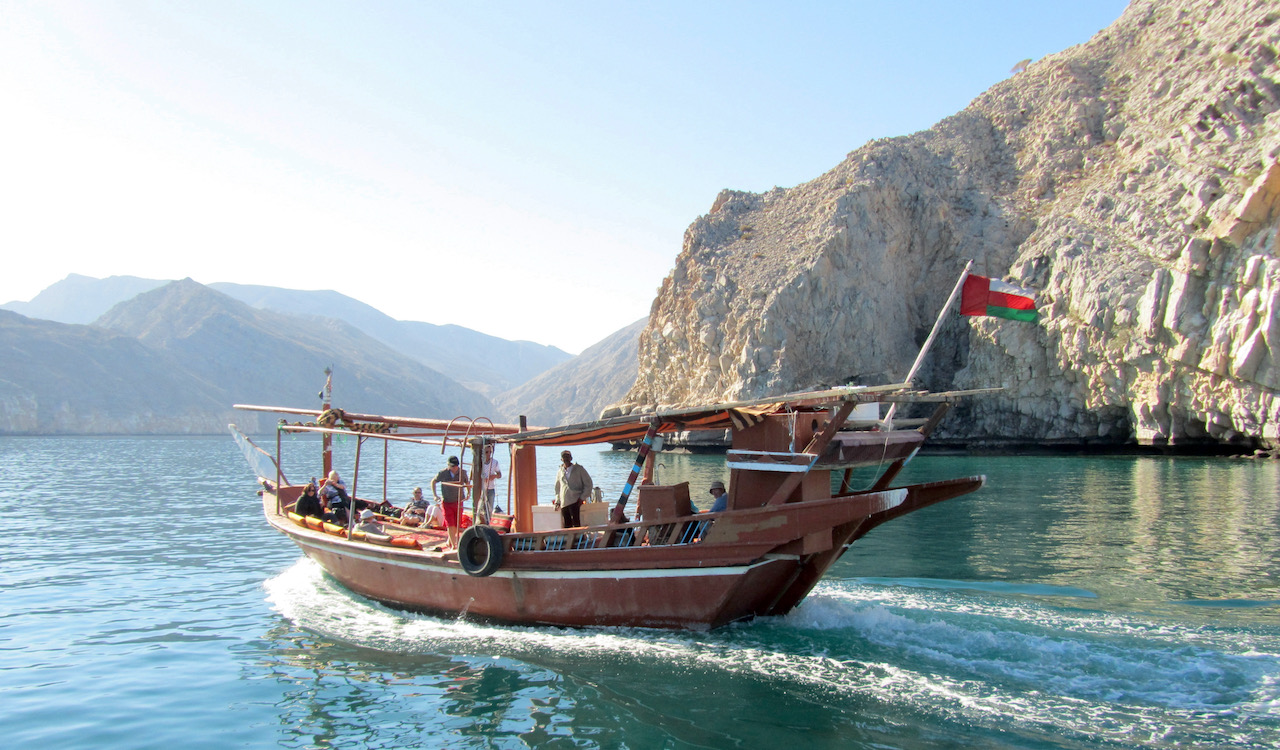
On the other hand, the words “Middle East” usually conjure up images of sandy deserts seared by a blazing sun, plus camels and gleaming cities built with petrodollars.
So it might come as a surprise to learn that there are in fact fjords in the Middle East. A fjord is defined by National Geographic as a “long, deep, narrow body of water that reaches far inland… with steep walls of rock on either side… Fjords were created by glaciers.”
In addition to Norway, they are found in Chile, New Zealand, Canada, Greenland, and Alaska. The Middle East ones – known as khors – are in Musandam, Oman. Though you may not recognise the name, if you’ve watched the news or read a paper in the past 25 years you’ll know about this part of the world.
For Musandam is a peninsula that juts out into the Strait of Hormuz, the strategically vital waterway through which a fifth of the world’s oil passes on its way from the Gulf to world markets. On the opposite shore is Iran, and the waterway has frequently been a flashpoint amid the fluctuating relations between that country and the West.
But there’s a happier side to Musandam. It’s a popular diving area, though tricky currents mean it’s no place for beginners. And then there are those fjords, where day trippers and holidaymakers can race dolphins aboard a traditional Arabian vessel known as a dhow before going snorkelling or enjoying a relaxing lunch.









